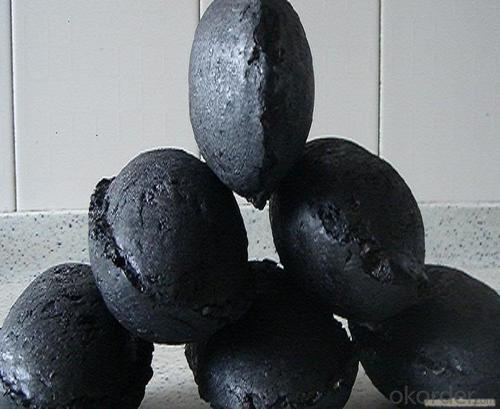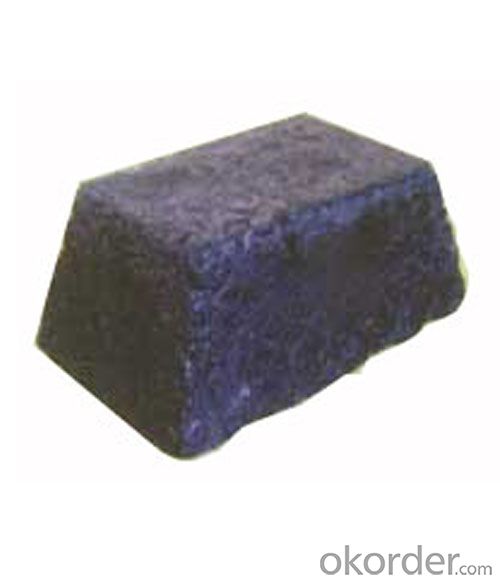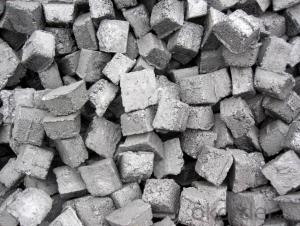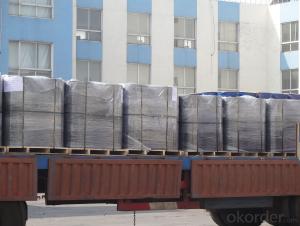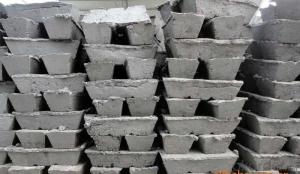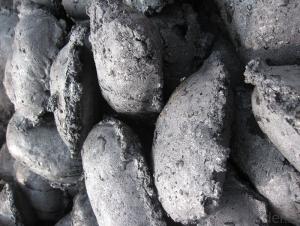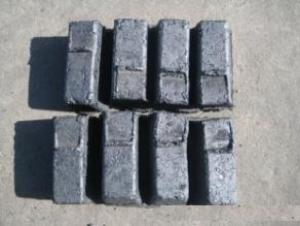Low Ash Carbon Electrode Paste -Ash4 Cheap And Good
- Loading Port:
- China main port
- Payment Terms:
- TT OR LC
- Min Order Qty:
- 0 m.t.
- Supply Capability:
- 20000 m.t./month
OKorder Service Pledge
OKorder Financial Service
You Might Also Like
Main Function And Features
1) Low ash content
2) Good electric and thermal conductivity
3) High resistance to temperature
4) Stable quality
5) Reasonable price
6) Size:all kinds of electrode paste
7) Accord customer's reques change
Introduction To Products
1) Carbon Electrode Paste is a self-baking electrode used in submerged arc furnaces for delivering power to the charge mix.
2) Electrode Paste is added to the top of the electrode column in either cylindrical or briquette form.
3) As the paste moves down the electrode column the temperature increase causes the paste to melt and subsequently bake
forming a block of electrically conductive carbon.
4) Electrode Paste is essentially a mix of Electrically Calcined Anthracite (ECA) or Calcined Petroleum Coke (CPC) with Coal
Tar Pitch.
Application Range
1) Be used as the electrode for self roasting in the iron-alloy furnace and acetylene furnace.
2) Amorphous graphite powder--applied in steel making,fireproof material,casting coating.
3) Calcined petroleum coke--used in foundry,metallurgy,carbon paste,graphite electrode.
4) Carbon anode scrap--used as smelting fuel for copper smelting industry.
5) Carbon electrode paste--applied in iron alloy,calcium carbide,ferroalloy,ferromanganese.
Specification
Specification/Item |
|
|
|
|
|
|
Ash | 4.0%max | 5.0%max | 6.0%max | 7.0% Max | 9.0% Max | 11.0% Max |
VM | 12.0%-15.5% | 12.0%-15.5% | 12.0%-15.5% | 9.5.0%-13.5% | 11.5%-15.5% | 11.5%-15.5% |
Compress Strength | 18.0Mpa Min | 17.0Mpa Min | 15.7Mpa Min | 19.6Mpa Min | 19.6Mpa Min | 19.6Mpa Min |
Specific Resistance | 65μΩm Max | 68μΩm Max | 75μΩm Max | 80μΩm Max | 90μΩm Max | 90μΩm Max |
Bulk Density | 1.38G/CM3 Min | 1.38G/CM3 Min | 1.38G/CM3 Min | 1.38G/CM3 Min | 1.38G/CM3 Min | 1.38G/CM3 Min |
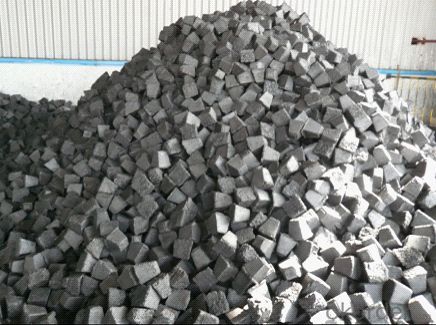
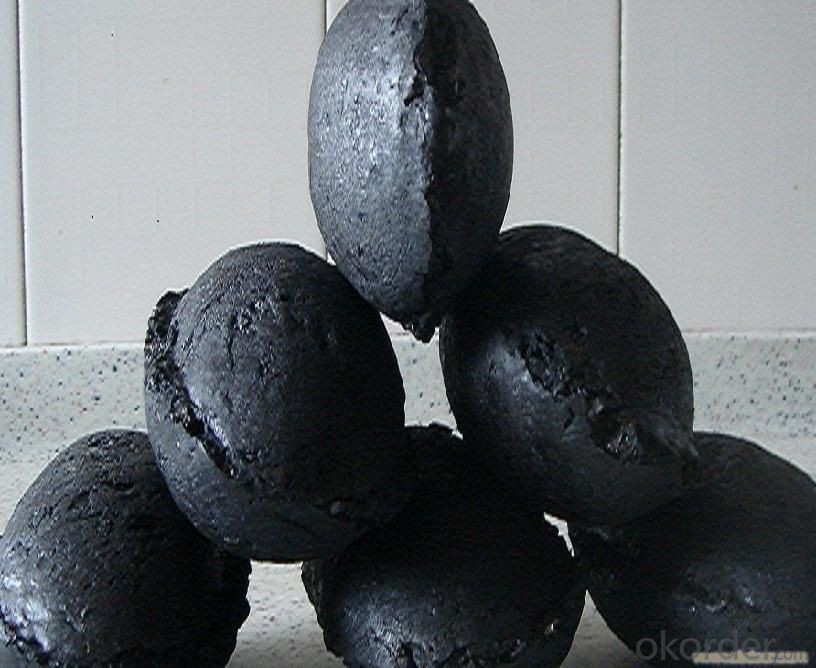
- Q: What are the impacts of carbon emissions on the stability of savannas?
- The impacts of carbon emissions on the stability of savannas are significant. Increased carbon emissions contribute to the greenhouse effect, leading to global warming and climate change. These changes in climate can directly affect the natural balance and stability of savannas. One of the main impacts is an alteration in rainfall patterns. Climate change can disrupt the regular rainfall cycles in savannas, leading to extended periods of drought or intense rainfall events. This can disrupt the ecosystem's natural fire regime, which is crucial for maintaining the savanna's biodiversity and preventing the encroachment of woody vegetation. Additionally, elevated carbon dioxide levels can promote the growth of certain plant species, particularly those that are more efficient at utilizing carbon dioxide. This can lead to changes in the composition and structure of savanna vegetation, favoring the growth of more dominant and invasive species. Such changes can potentially reduce the diversity and resilience of the savanna ecosystem. Furthermore, increased carbon emissions contribute to the acidification of rainwater and soils. This can negatively impact the nutrient availability and composition of savanna soils, affecting the productivity and health of the entire ecosystem. Overall, carbon emissions pose a significant threat to the stability and functioning of savannas, impacting their biodiversity, fire regime, rainfall patterns, and soil health. It is crucial to address and reduce carbon emissions to mitigate these impacts and ensure the long-term conservation of savanna ecosystems.
- Q: What is carbon neutral shipping?
- Carbon neutral shipping refers to a method of transportation that offsets or eliminates the greenhouse gas emissions produced during the shipping process. This can be achieved through various measures like using renewable energy sources, energy-efficient technologies, or purchasing carbon credits to compensate for the emissions. The goal is to balance out the amount of carbon dioxide released into the atmosphere, making the shipping process environmentally sustainable.
- Q: How does carbon affect the growth of plants?
- Plants rely on carbon for their growth and development, as it is a vital element. It is found in organic compounds like carbohydrates, proteins, and lipids, which are essential for plants' metabolic processes. Photosynthesis allows plants to convert carbon dioxide into glucose and other sugars, providing them with energy for various functions and growth. Additionally, carbon plays a crucial part in building plant structures. Cellulose, a complex carbohydrate composed of carbon, hydrogen, and oxygen, gives rigidity and support to plant cell walls, enabling them to maintain their shape and withstand mechanical stress. Lignin, another carbon-based compound, strengthens stems and roots, allowing plants to grow upright and resist bending or breaking. Moreover, carbon has a role in regulating plant hormones and signaling molecules that control growth and development. It acts as a foundation for the synthesis of various plant hormones, such as auxins, gibberellins, and cytokinins, which influence cell division, elongation, and differentiation. To summarize, carbon is crucial for plant growth as it fuels their energy needs, provides structural support, and participates in hormonal regulation. Understanding the significance of carbon in plant growth is essential for optimizing agricultural practices, ensuring healthy crop yields, and mitigating the impact of climate change on plant ecosystems.
- Q: What are the benefits of carbon fiber?
- Carbon fiber (carbon fiber, referred to as CF) is a new kind of fiber material with high strength and high modulus fiber with carbon content of more than 95%. It is a flaky graphite, microcrystalline and other organic fibers stacked along the axial direction of the fiber, obtained by carbonization and graphitization of microcrystalline graphite material.
- Q: What is carbon steel, carbon manganese steel?
- Compared with other kinds of steel, carbon steel is the earliest, low cost, wide performance range and the largest amount. For nominal pressure PN is less than or equal to 32.0MPa, temperature of -30-425 water, steam, air, hydrogen, ammonia, nitrogen and petroleum products such as medium. Commonly used grades are WC1, WCB, ZG25 and high quality steel 20, 25, 30 and low-alloy structural steel 16Mn
- Q: What is the role of carbon in photosynthesis?
- The role of carbon in photosynthesis is to serve as the building block for glucose, the main energy source for plants. Carbon dioxide (CO2) is captured during photosynthesis and converted into glucose through a series of chemical reactions. This process, known as carbon fixation, is essential for plants to produce food and release oxygen into the atmosphere.
- Q: How does deforestation contribute to carbon emissions?
- Deforestation plays a significant role in contributing to carbon emissions. When forests are cleared or burned down, the carbon stored in trees and vegetation is released into the atmosphere in the form of carbon dioxide (CO2), a greenhouse gas that contributes to global warming. Forests act as natural carbon sinks, absorbing CO2 from the atmosphere through the process of photosynthesis. Trees and plants convert CO2 into oxygen and store the carbon in their trunks, branches, leaves, and roots. This process helps to regulate the Earth's climate by reducing the concentration of CO2 in the atmosphere. However, when forests are deforested, this natural carbon storage system is disrupted. The carbon that was once stored in trees and vegetation is released back into the atmosphere, increasing the concentration of CO2. This process is further exacerbated when forests are burned, as the combustion of trees and plant material releases even larger amounts of carbon. The loss of forests also leads to a decrease in biodiversity and the destruction of habitats for numerous species, which in turn disrupts the delicate balance of ecosystems. As these ecosystems are disrupted, they become less efficient at absorbing and storing carbon, further contributing to increased carbon emissions. Moreover, deforestation contributes to carbon emissions indirectly through several other means. For instance, when trees are cleared, the soil beneath becomes exposed to sunlight and heat, causing it to dry and release stored carbon. Additionally, deforestation often leads to the conversion of land for agricultural purposes, such as livestock farming or palm oil plantations, which can result in increased methane emissions, another potent greenhouse gas. In summary, deforestation contributes to carbon emissions by releasing the stored carbon in trees and vegetation, disrupting the natural carbon storage system, and indirectly contributing to the release of other greenhouse gases. It is crucial to address deforestation and promote sustainable land management practices to mitigate the effects of climate change and reduce carbon emissions.
- Q: I saw a cell phone in the magazine, the global release of 900, no camera, what function is F1 carbon fiber material, actually sold 40000 yuan a piece!.. Everyone said that the circulation is so small, worth so much money? Or carbon fiber material worth so much money?
- Carbon fiber material is very expensive, we are specializing in the production of carbon fiber bicycle accessories company, we know more about this industry.. Such an analogy, an aluminum alloy wheel, that is, the cost of more than 100 yuan, to replace the same carbon fiber material costs more than 1000 of the cost.. Carbon fiber belongs to high-end materials, and foreign countries is to control production, because many weapons and aircraft also use this material, the United States will build weapons in other countries, so are the strict control of each production state of carbon fiber materials..
- Q: What are the different methods of measuring carbon dioxide levels in the atmosphere?
- There are several methods used to measure carbon dioxide levels in the atmosphere. These methods include direct measurement, remote sensing, and ice core analysis. Direct measurement is the most accurate and widely used method. It involves taking air samples from various locations around the world and analyzing them using gas analyzers. These analyzers can measure the concentration of carbon dioxide in the air, usually expressed in parts per million (ppm). Remote sensing is another method used to measure carbon dioxide levels. It involves using satellite-based instruments to observe and measure the amount of carbon dioxide in the Earth's atmosphere. These instruments can detect the absorption and scattering of sunlight by carbon dioxide molecules, providing valuable data on its concentration. Ice core analysis is a historical method of measuring carbon dioxide levels. Scientists drill deep into ice sheets in polar regions and extract ice cores. These ice cores contain trapped air bubbles from hundreds or thousands of years ago. By analyzing the carbon dioxide content in these bubbles, scientists can reconstruct past atmospheric carbon dioxide levels and compare them to present-day levels. Each of these methods has its advantages and limitations. Direct measurement provides real-time data and precise measurements, but it requires a vast network of monitoring stations worldwide. Remote sensing offers a global perspective and can cover large areas, but it may have limitations in resolving fine-scale spatial variations. Ice core analysis provides valuable long-term historical data, but it is limited to specific regions and can only provide indirect measurements. Combining these methods allows scientists to gain a comprehensive understanding of carbon dioxide levels in the atmosphere, helping us monitor and assess the impact of human activities on climate change.
- Q: What is a carbon electrode? What's the use? What's the current situation in the industry? Try to be specific. Thank you
- Tons of ferrosilicon smelting costs reduced by 300-400 yuan, tons of calcium carbide smelting costs reduced by more than 100 yuan.Carbon electrode is an energy saving and environmental friendly product. It can greatly reduce power consumption and reduce pollution in the use of calcium carbide and ferroalloy ore heating furnaces. It is the replacement product of electrode paste. In the submerged arc furnace with the same capacity, electrode paste self baking electrode compared with the following characteristics: improving smelting furnace production, reduce power consumption and reduce the labor intensity (15-20%; 1 tons of iron smelting alloy consumption of electrode paste carbon electrode about 60kg, consumption is only about 12kg, reduce the operating times of the electrode), simplified production process; to avoid or reduce the self baking electrode frequent "broken soft" and "hard" accidents, improve the working environment, reduce operating costs.
Send your message to us
Low Ash Carbon Electrode Paste -Ash4 Cheap And Good
- Loading Port:
- China main port
- Payment Terms:
- TT OR LC
- Min Order Qty:
- 0 m.t.
- Supply Capability:
- 20000 m.t./month
OKorder Service Pledge
OKorder Financial Service
Similar products
Hot products
Hot Searches


